Production and breeding of rabbits in factory farms in Spain
Breeding rabbits are artificially inseminated and become pregnant 8.5 times in the same year. The gestation period for females lasts about 31 days, and they stay with the kits for an additional 35 days until weaning. They spend only 11 days until the next insemination, and from the first year, when their productivity declines, they are either sent to the slaughterhouse or die on the farms, even though their natural lifespan can reach up to 12 years.
During mating, the female rabbit's reproductive system requires the presence of a male to initiate functioning. However, in industrial breeding processes, these hormones are artificially administered to females through medications. AnimaNaturalis's investigative team documented rabbit fetuses in cages and excrement pits, along with females that died due to abortions.
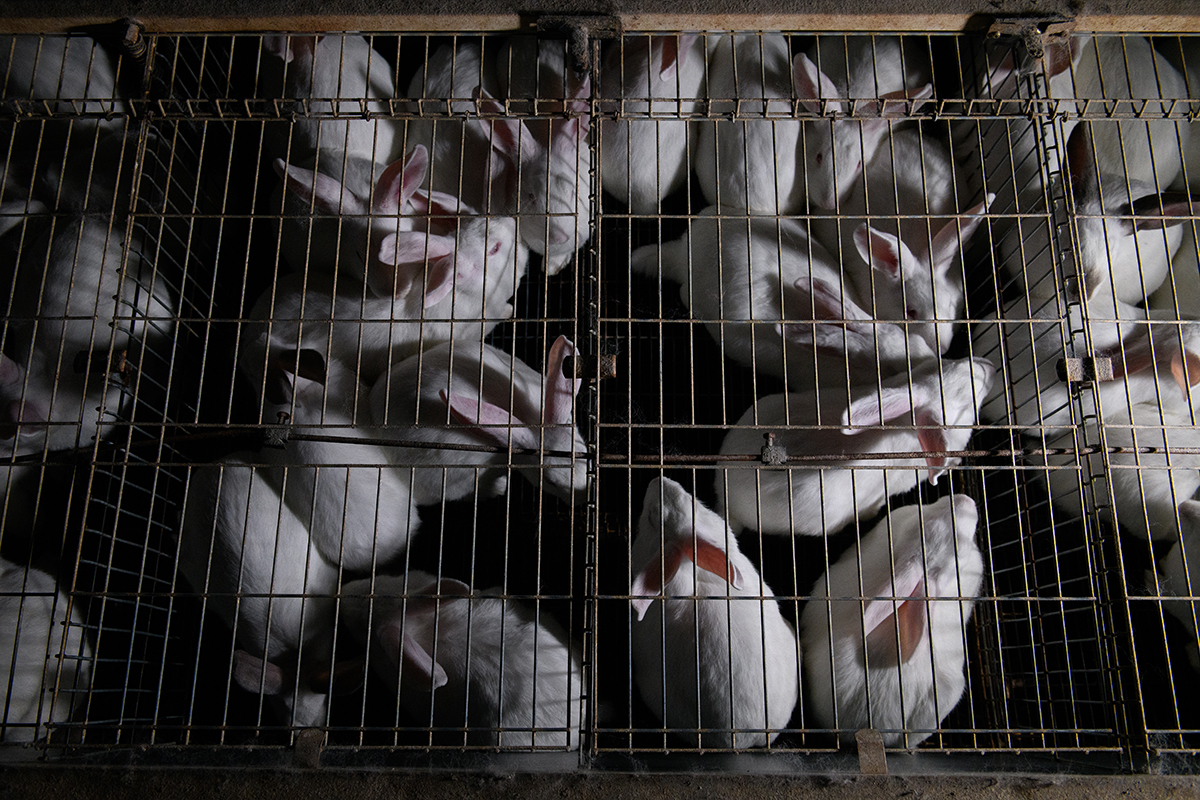
“The higher the frequency of pregnancies, the more likely mastitis develops in rabbits. When mastitis occurs, the infection can pass to the offspring, and these animals may either die or not grow properly. Identifying such issues allows for timely attention and corrective measures,” explains David Perpiñan, a veterinarian specialized in pet rabbit medicine, who has supervised the conclusions on the health of the animals presented in this work.
Mastitis is an infection in the breasts that can be transmitted to kittens through milk. In addition to the frequency of births, lack of hygiene and stress are conducive conditions for the development of this disease.
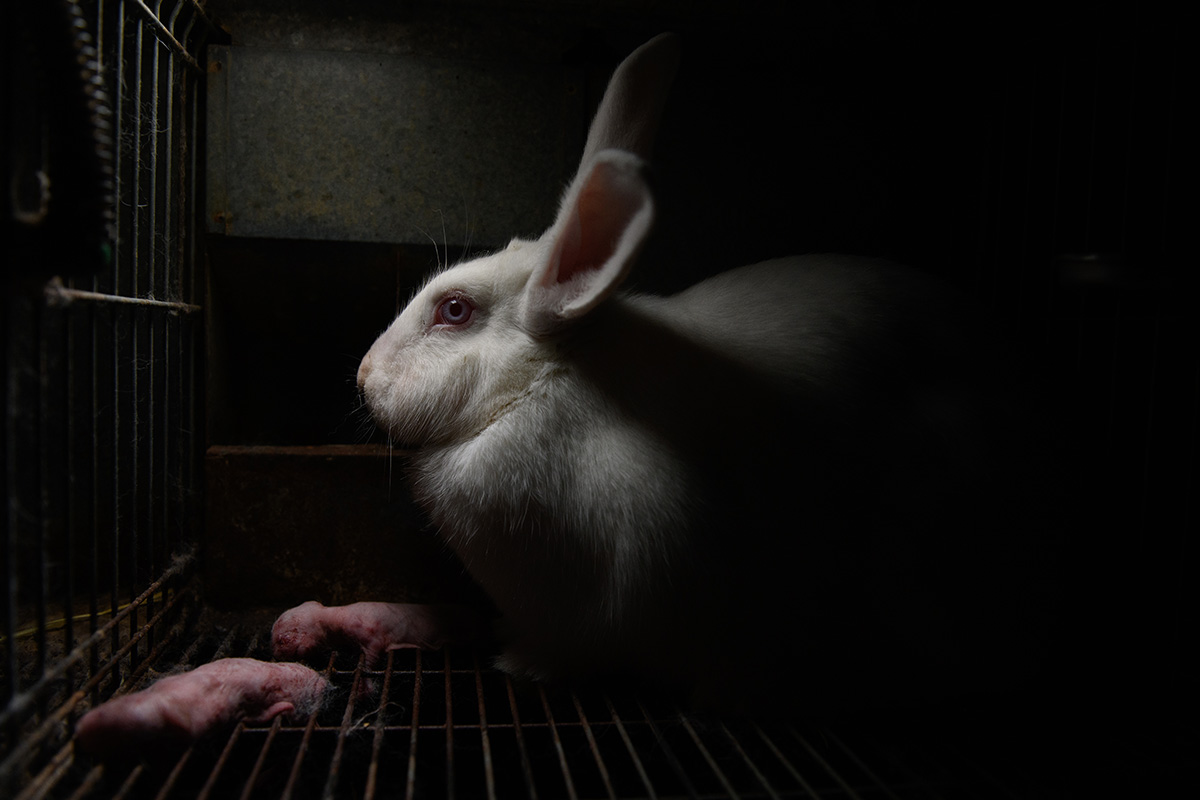
Of each litter, which typically consists of between 10 and 12 kits, approximately 9.45% are estimated to die during lactation, and 10.35% during the fattening phase. Rabbits are usually born in a nest - typically a plastic tray located in an annex to the cage, which the rabbit accesses through a hole. Ideally, this nest should be covered with straw and arranged with hair.
Immediately after birth, young rabbits are extremely delicate and can suffer from heat stress. They are entirely dependent on the mother's warmth and care. Sometimes, newborns fall from the nest into the cage area, and the cage's design prevents them from returning, leaving them to die of hypothermia on the bars, fall into the pit, or be crushed.
Those that survive are sent to the slaughterhouse when they are only 3 or 4 months old, having reached a weight of between 2.5 and 3 kg as demanded by the market. Throughout this time, they remain in the same cages, alongside their mothers until weaning, and as they gain weight, they become increasingly crowded.
Livestock farms already anticipate that a percentage of animals will not be suitable for sale. For this reason, when rabbits cannot endure the conditions to which they are subjected, it is more cost-effective for the company to let them die rather than provide individualized veterinary care.
If operators identify sick rabbits, they may decide to euthanize them. It is common for them to grasp the hind legs of the rabbits and cause fatal trauma by striking their heads against the wall.
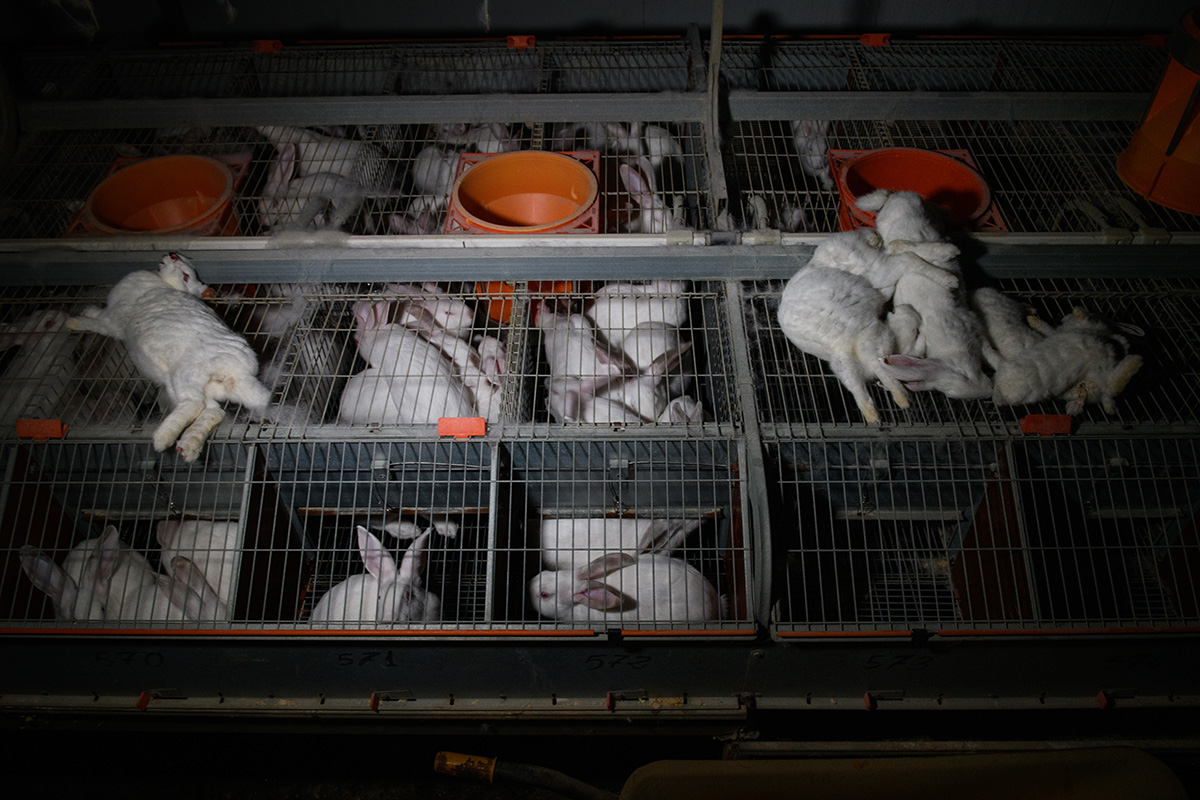
Facilities
The sample of farms visited during the investigation includes farms of various sizes, ages, and levels of hygiene, providing insight into the living conditions of 99% of the rabbits raised in Spain. Only 1% of farms are classified as organic, supposedly offering greater guarantees of animal welfare.
The typical length of a rabbit is 75 centimeters, and they are housed in cages with a standard size of 45 x 60 centimeters. This means they cannot lie down completely, let alone jump. They spend their entire lives resting on bars that are approximately 3 millimeters thick, causing damage to their legs and resulting in painful pathologies.
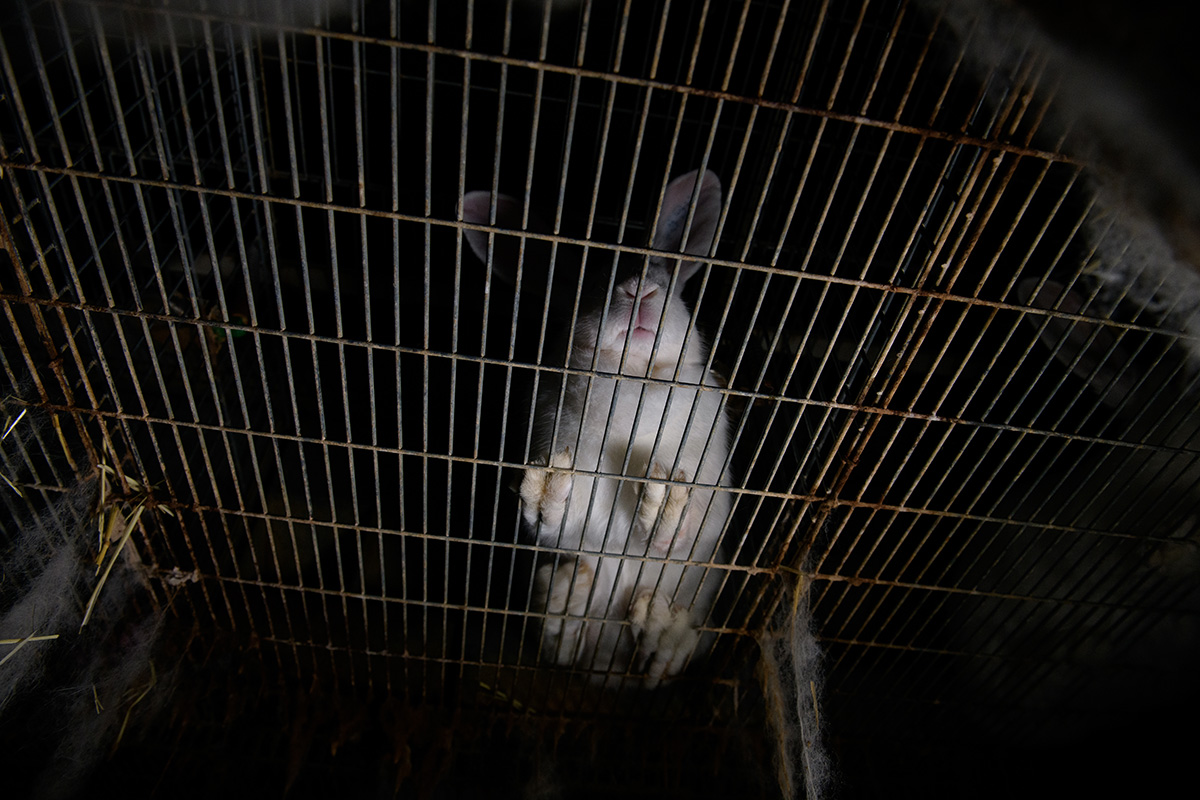
Rabbit farms typically consist of a series of elongated buildings occupied by cages arranged in corridors approximately 1 meter above the ground. Below these cages are pits, about 50 centimeters deep, where excrement accumulates. These gutters are periodically cleaned by either completely removing the accumulated material or storing it in a large pit outside.
Typically, the cleaning system involves shovels that drag the slurry into the pit. This mechanism is usually automatic and can be activated with the press of a button. However, AnimaNaturalis researchers have reported “appalling conditions in which most of the visited farms' infrastructure was maintained.”
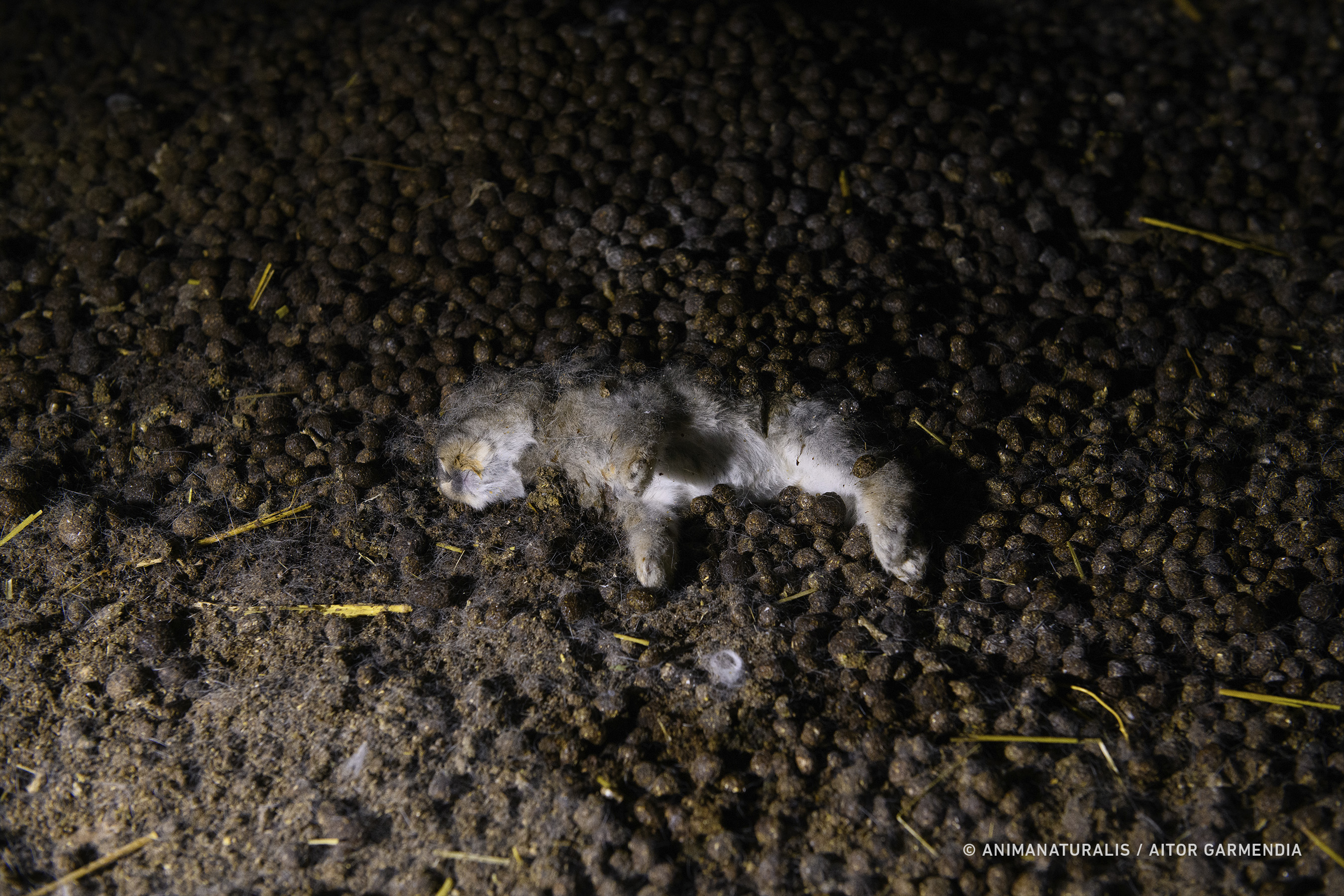
Given the sensitivity of rabbits, maintaining stable temperatures and preventing drafts in the enclosure is crucial. Therefore, doors are always kept closed, and windows are covered. Usually, these windows have mosquito nets to theoretically prevent insect entry. Additionally, lighting is entirely artificial, so the rabbits never experience natural sunlight.
“Inside one facility, we observed cats devouring corpses that a worker had left in the hallway, presumably to be picked up later. Several days later, the bodies remained in the same position, treated like trash,” testified a researcher from the AnimaNaturalis team.
In that facility, the conditions were grotesque. Cobwebs indicated that it had not been cleaned for a long time, and in addition to dead animals in every corner, the floor was littered with unlit cigarette butts among straw and hair,” said a researcher from the AnimaNaturalis team.
These animals never breathe fresh air. Up to a dozen rabbits can live in each wire cage, and kilos of excrement and dirt accumulate beneath them. Sometimes, you can find blood and corpses in the manure piles, creating a perfect environment for the proliferation of flies and rodents, which can transmit diseases.
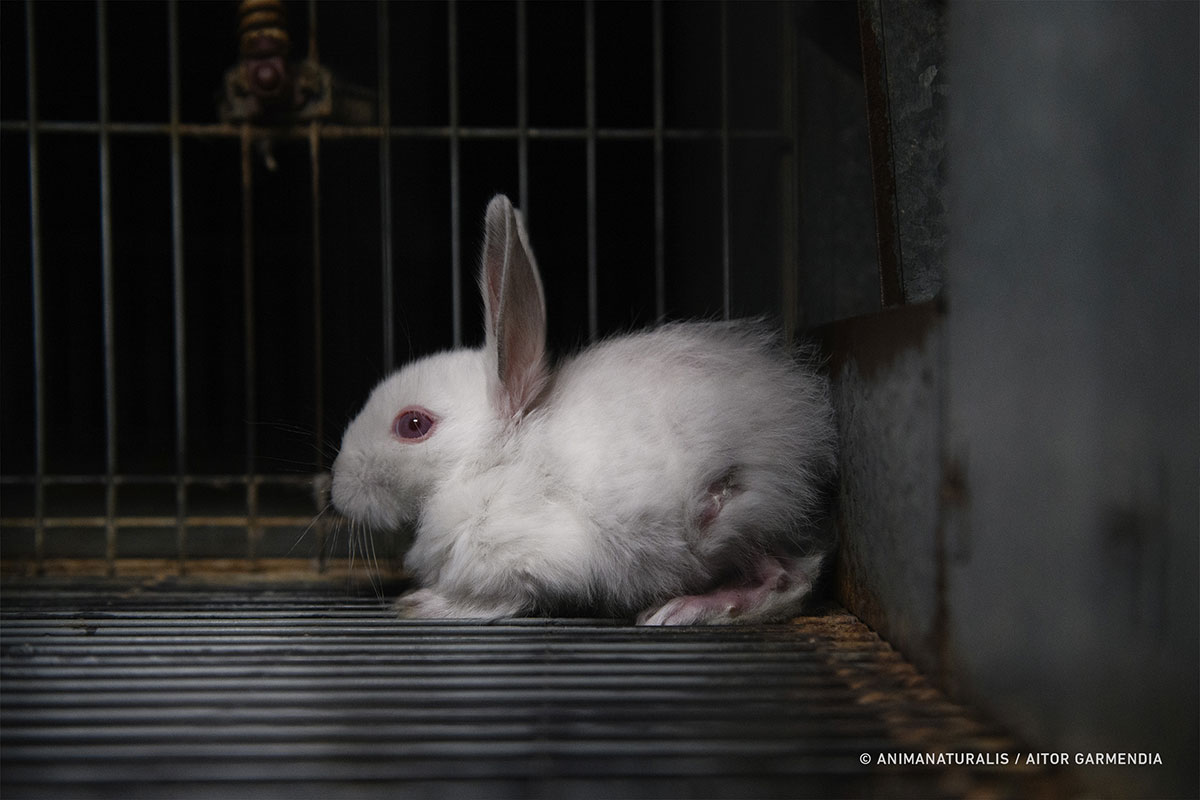
Rabbits are naturally elusive, wary, and active animals, as they typically play the role of prey in nature. They are highly social, forming family groups, and spend a significant portion of their time gnawing, digging, and seeking hiding places. Unfortunately, in cages, all of these natural behaviors are impossible.
“Our research provides undeniable evidence that the rabbit industry relies on a cruel system, far from meeting any minimally acceptable standards of welfare. The use of cages alone prevents rabbits from exhibiting any of their natural behaviors, causing them high levels of physical and psychological suffering throughout their lives,” states Aïda Gascón, Director of AnimaNaturalis Spain.
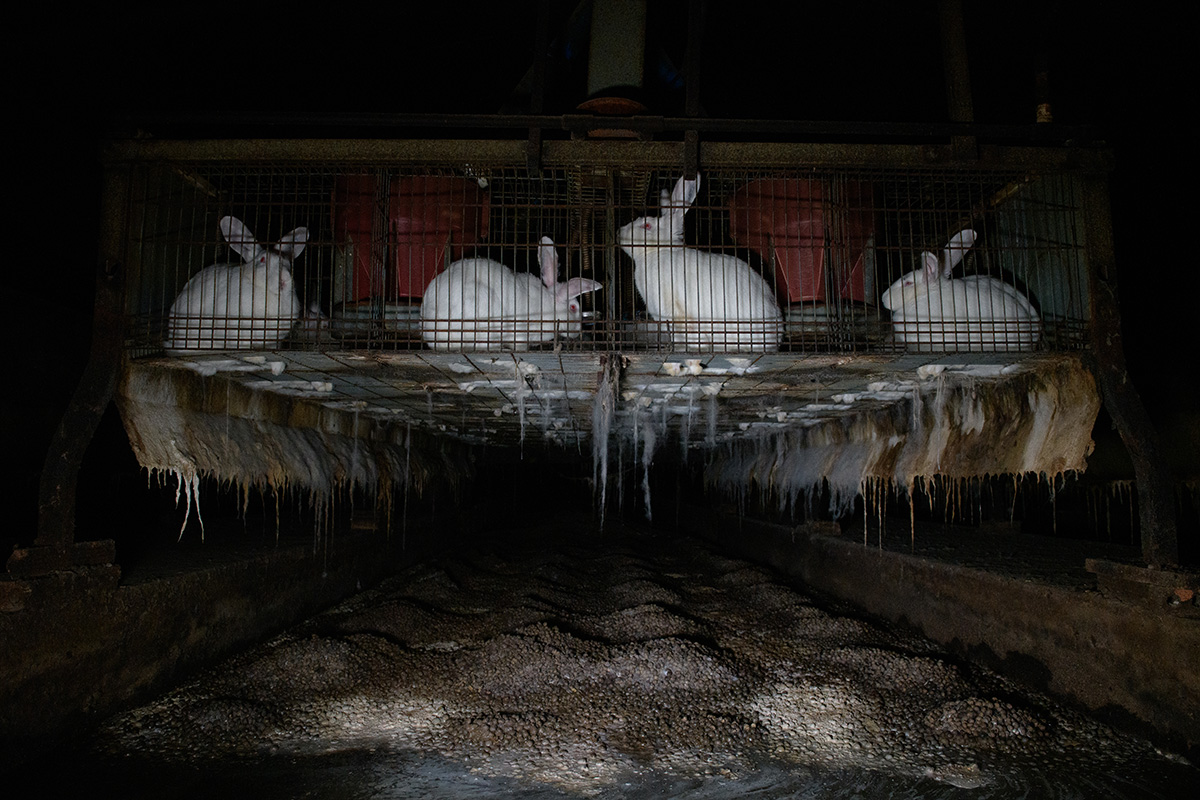
Wire cages are supposedly used to prevent moisture buildup. However, this is detrimental to the well-being of rabbits, who spend their entire lives with damaged legs and restricted in their natural movements.
In recent years, some farms have introduced small pieces of plastic into cages with a wider weave than that of the cage, with the intention of providing a better resting area. However, this measure has proven to be insufficient and still falls far short of the minimum animal welfare conditions that rabbits require.
